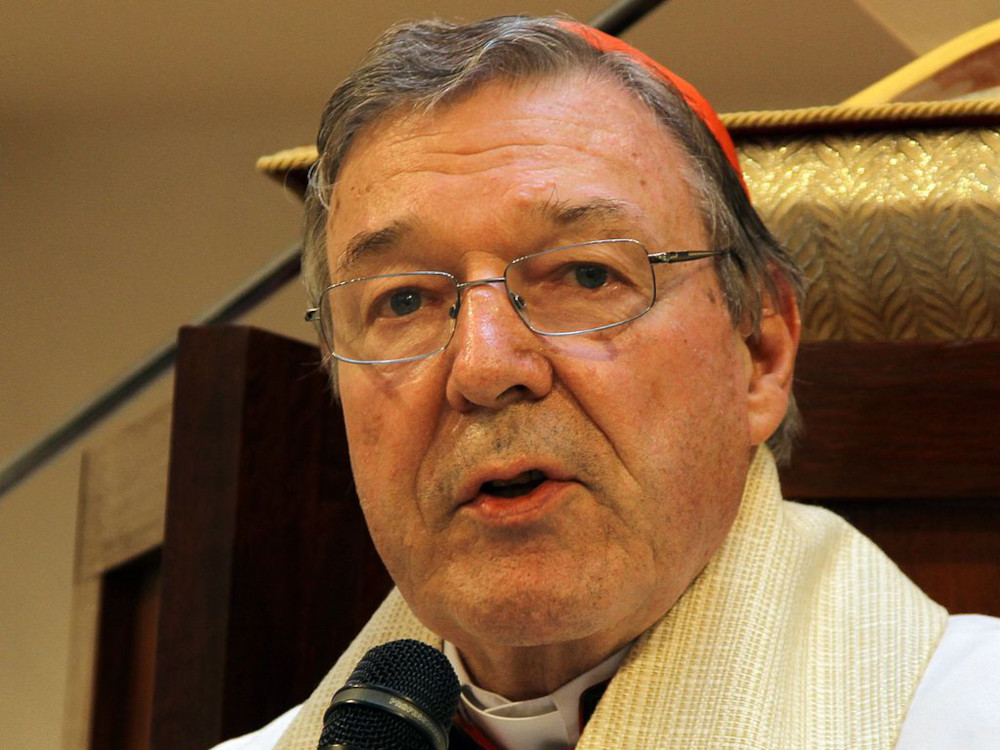George Pell was not present for the final stage in his legal saga, which saw his conviction for child sexual about overturned in a seven to zero result at the High Court. It was late on the morning of the second day of the hearing that the prosecution case began to fall apart rapidly. Sitting in the media room, which had the live feed, it was as if suddenly as. if a ship had been torpedoed.
Whether Pell meets and greets people at Melbourne’s St Patrick’s Cathedral’s west door – especially on the first Sunday of his time as Archbishop – becomes a key talking point.
This is because if Pell had done that, there would have been no time for the offences to take place in the robing room known as the sacristy – because other people would have been there. The Justices raise the point that if it was usual for Pell to go to the door and meet and greet – that would be enough to raise a reasonable doubt.
Victoria’s Director of Public Prosecutions Kerri Judd, takes the court through choirboys’ evidence about where Pell went after the service. Sometimes he continued with the procession around the back of the Cathedral.
Justice Virginia Bell: “The appeal Judges found it was open to the jury that there was a real possibility that the archbishop was in the sacristy [where the alleged offences took place]. But it leaves open the possibility that he was not.”
Another key passage: Justice Geoffrey Nettle asks of the defence witness Portelli’s evidence for the first Sunday (that Pell greeted people at the door on his first Sunday) “Was the jury entitled to find beyond reasonable doubt that it was not true?” Judd: “Can I reflect on that and answer after lunch?”
A question from Judd: “How did he [the informant] get the room right?” The priests’ sacristy was only used by Pell to disrobe for a limited period, Due to renovations. But the complainant picked that room. “He didn’t even know the name, he had to point to it.”
“You can’t view what the complainant described through an open door. He had to have an opportunity to go into that room. But it was limited opportunity, because it was pretty well kept locked.”
“There is no other evidence for how he would have known about that room unless the offence occurred”. Two Justices (including Nettle) say that the complainant might have had an opportunity during the two years he was a choir boy.
After lunch, Judd returns to the issue of how the informant would have known about the room.
Judd says that fact that Pell was disrobing in the Priest’s sacristy rather than the Archbishop’s Sacristy at the Cathedral for a short time was not well known. “If the complainant was fantasising, surely it would have been the Archbishop’s sacristy he would have made a story up about.” The complainant identified the room when he was taken to the Cathedral. she points out that the complainant’s description is matched by the evidence of defence witness Portelli.
Judd relies on the argument that although a choirboy for two years that the complainant would not have been able to get into that room. but he describes it accurately.
“That shows he was there at some point in time, does it go any further than that?” asks Bell.
Later, Chief Justice Susan Keifel asks a series of tough questions as Judd seems to shift ground on the timing of the alleged offences, differing from the Court of Appeal timeline. “That’s why prosecutors want to tie these important issues down.” Ouch. Today there are many more questions and harder ones. The judges are very interested in the timeline at the end of mass and ask lots of follow-up questions. As the afternoon drags on, the protection case fails to resolve the reasonable doubt incurred when one reconstructs that crucial day at the cathedral.
When the verdict was announced, it was a difficult day for the informant and the many survivors and their advocates for whom the Pell case had become symbolic, an emblem for the Catholic abuse scandals. Having sat through the hearing, I tried to warn people close to the survivors that Pell could very well win.
Image Credit: Kerry Myers


This article could do with an explanation of timing – the 2nd last para appears to be written almost live during the hearing and the final para weeks/months later (and we are now reading it three years later). Was this part of a previously published article with the final para added later?
Yes